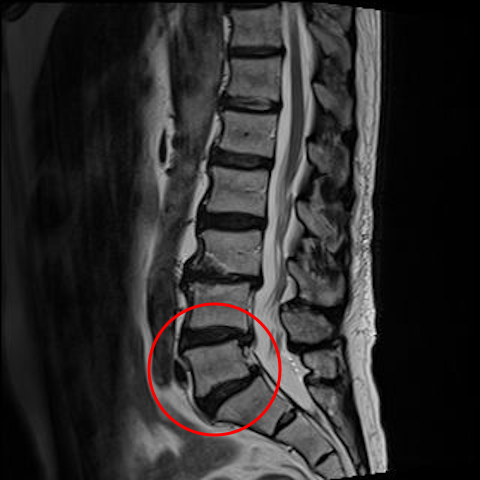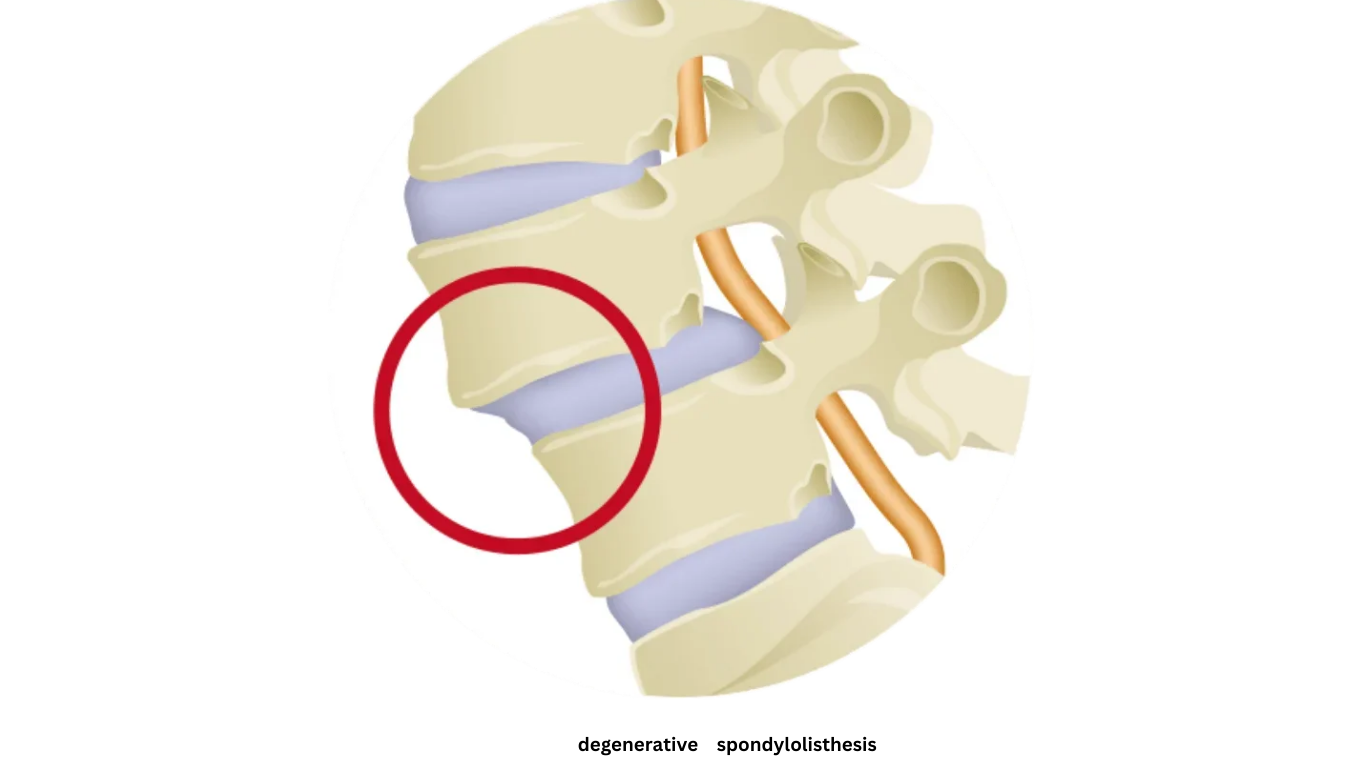Column Lumbar Spondylolisthesis: Basic Facts About This Dreaded Disease That Affects The Lower Back and Legs
October 27, 2023
Lumbar spondylolisthesis is a condition of the lumbar region in which the vertebrae deviate from their normal position.
According to the Spine Surgery Survey Report of the Japanese Society for Spine and Spinal Cord Diseases published in 2004, lumbar spondylolisthesis is the second most common condition after herniated discs and spinal canal stenosis. *1

*Reference No 1: Yutaka Nohara et al., “Nationwide survey on complications of spine surgery in Japan” Journal of the Japanese Society for Spine Surgery and Related Research, 15 (2), 2004.
Nationwide_Survey_on_Complications_of_Spine_Surgery_in_Japan (in English)
The different types of lumbar spondylolisthesis
Lumbar spondylolisthesis can be divided into two types: lumbar degenerative spondylolisthesis and lumbar spondylolisthesis, but there is also dysplastic spondylolisthesis, which develops due to congenital factors.
Dysplastic Spondylolisthesis
Dysplastic Spondylolisthesis are caused by birth defects in the development of the spine and are quite rare.
Symptoms may appear at a relatively young age, often accompanied by lumbar spondylosis, and may progress to severe spondylolisthesis.
Lumbar Degenerative Spondylolisthesis
Lumbar degenerative spondylolisthesis occurs when the lumbar vertebrae shift from their normal position due to the degeneration of the intervertebral discs as they age, as well as from the intervertebral joints and vertebral bodies. It is especially common between the 4th and 5th lumbar vertebrae.
Lumbar Spondylolisthesis
Lumbar spondylolisthesis is caused by the mechanical vulnerability for lumbar spondylosis and the progressive degeneration of the lumbar vertebrae over a long period of time. Because the fifth lumbar vertebrae are most often separated, spondylosis often occurs between the 5th lumbar vertebra and the underlying sacral vertebrae.


The different causes of lumbar spondylolisthesis
Spondylolisthesis is often caused by playing sports or other activities from a young age on, and with aging, the tissues that hold the lumbar spine in place, such as the intervertebral discs, ligaments, and joints, degenerate, resulting in a loss of stability of the lumbar vertebrae.
Recent research indicates that intervertebral disc degeneration is a factor that causes Spondylolisthesis. *2
Degeneration of the intervertebral discs place stress on the spine and intervertebral joints, causing instability of the bones and other parts of the spine, which in turn causes spondylolisthesis.
*Reference No 2: I. Akkawi, H. Zmerly. Degenerative Spondylolisthesis: A Narrative Review. Acta Biomedica, vol. 92, No.6, 2021.
The different symptoms of lumbar spondylolisthesis
Unfortunately, mild lumbar spondylolisthesis is often asymptomatic, Mild lumbar spondylolisthesis is often asymptomatic, and tests are often performed after symptoms begin to show that the lumbar spondylolisthesis has progressed.
The main symptoms of lumbar spondylolisthesis are back pain, pain and numbness in the buttocks and lower extremities. The appearance of symptoms depends on the degree of instability of the spondylolisthesis, the degree of degeneration of the intervertebral or isolated area, and the location and degree of nerve compression.
One of the most common symptoms of spondylolisthesis is numbness and pain in the buttocks and lower extremities that appears while walking. This is intermittent claudication, in which patients are often able to walk again after a short break, is also a common occurrence.
Degenerative spondylolisthesis is often associated with spinal stenosis, and symptoms of stenosis such as leg pain, numbness, intermittent claudication, and dysuria can be present.
In the case of spondylolytic spondylolisthesis, pain may be intensified by movements that place stress on the separated part of the spine, such as bending backward at the waist, and pain and numbness in the lower extremities may occur if there is pressure on nerve roots in the separated area.
The different treatments of lumbar spondylolisthesis
Once a diagnosis of spondylolisthesis has been made, the first step in treatment is conservative therapy. If symptoms do not improve with conservative treatment and are prolonged, then surgery is often suggested.
Conservative therapy
・Medical therapy
Anti-inflammatory analgesics and muscle relaxants are used to alleviate pain and other symptoms.
For symptoms such as leg pain and numbness caused by compression of the cauda equina nerve due to spinal canal stenosis, drugs to improve peripheral circulation and neuropathic pain medications are prescribed to improve symptoms.
・Physical Therapy
Physical therapy is a therapy that uses electricity or heat to stimulate the muscles in the area of the symptoms or to warm the area to improve symptoms.
・Traction therapy
This is a medical device that pulls the lumbar region vertically and stretches it to improve symptoms such as pain.
・Nerve block therapy
Local anesthetic is administered to the nerve or area causing the pain to alleviate the pain.
Surgery
Surgery is performed when there is no improvement after conservative treatment, when there is muscle weakness, or when dysplastic slip is present.
The most common surgical procedures are posterior lumbar decompression and lumbar fusion.
・Posterior lumbar decompression
Under general anesthesia, an incision of approximately 3 cm is made in the lumbar region, and the spinal canal is widened by removing the vertebral arch, etc. while checking under a microscope. This improves the condition where the nerves are compressed due to bone slippage.
Spondylolisthesis surgery may be performed alone or in combination with fusion surgery.
・Lumbar fusion
In fusion surgery, the part of the spine that is compressing the nerve is removed, and bone is grafted to fix the spine in place. An approximately 4.5 cm incision is made in the back, the intervertebral joint on the symptomatic side is removed, the disc is removed, and the patient’s own bone or bone from a bone bank is grafted to the disc and crimped to the upper and lower vertebrae using screws, rods, etc.
By fixing the slipped lumbar vertebrae, the unstable spine can be stabilized, and further slippage can be prevented.
Our Treatment – the Cellgel Method
At our clinic, we perform the Cellgel method for slipped discs that are caused by degeneration of the intervertebral discs.
As mentioned above, recent research indicates that disc degeneration is a factor that causes spondylolisthesis. Therefore, we believe that prevention of slip cannot be achieved without repairing degenerated intervertebral discs.
At our clinic, we inject a gel-like drug into the degenerated intervertebral disc to repair the disc. The volume of the disc is preserved without decreasing, preventing the progression of spinal misalignment that causes spondylolisthesis.
Unlike conventional surgery, this treatment does not involve incisions, so there are fewer postoperative risks.
If you have ever been diagnosed with a slipped vertebra or suffer from back pain, please consider having a consultation at our clinic.



